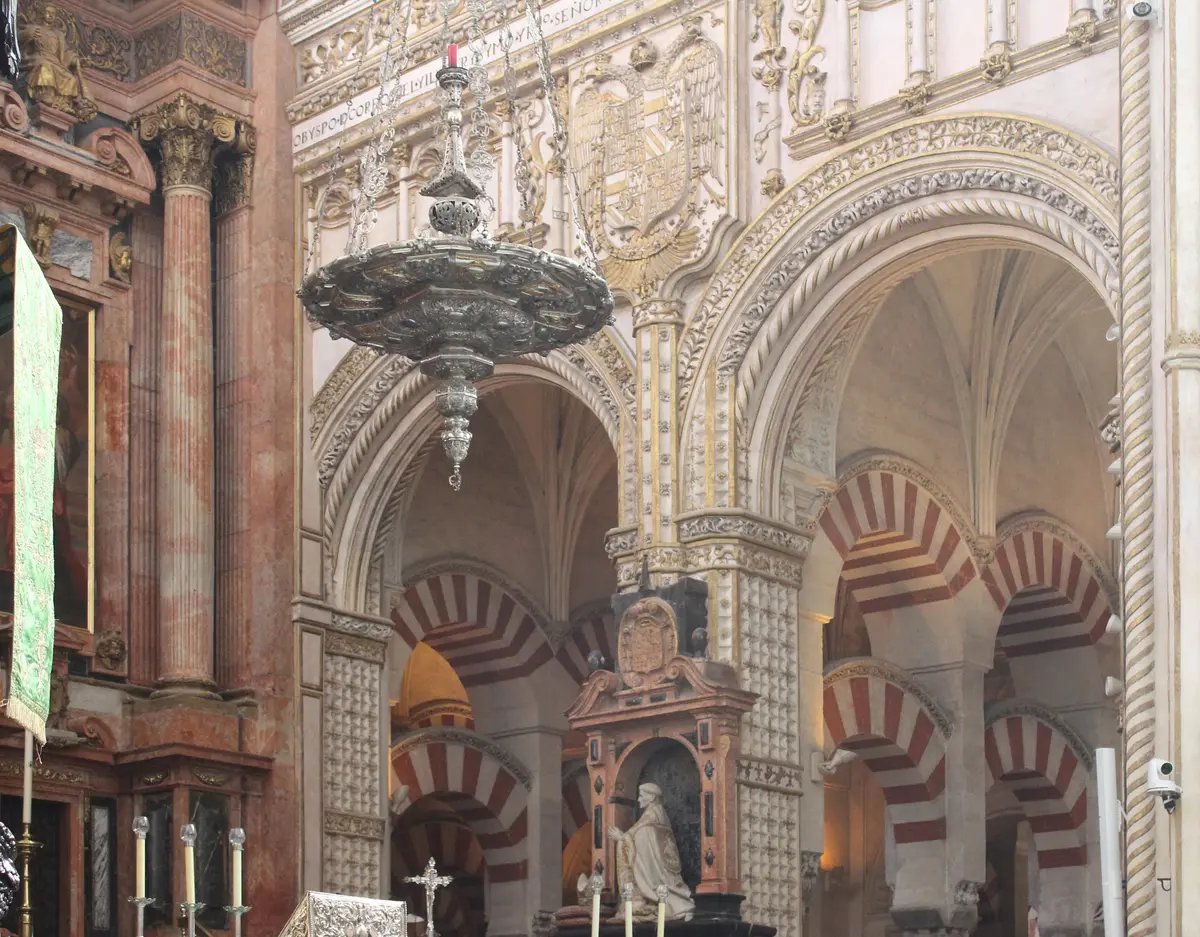
Córdoba, Córdoba, Andalusia, Spain
Mosque · Umayyad · 8th-10th Century
The Mosque-Cathedral of Córdoba is a unique monument that represents the history of the city. It is one of the most accomplished works of Moorish architecture. The building is most famous for its arcaded hypostyle hall, with 856 columns of jasper, onyx, marble, and granite.
Construction: 785 AD – 988 AD (Al-Mansur expansion)
Founder: Abd al-Rahman I
Key figures: Abd al-Rahman I, Abd al-Rahman II, Al-Hakam II, Al-Mansur
Significance: Symbol of the Golden Age of Al-Andalus and a unique hybrid of Islamic and Christian architecture.
- 785: Construction begins on site of Visigothic church
- 961: Expansion by Al-Hakam II adding the Mihrab
- 1236: Converted to a cathedral after Reconquista
- 16th Century: Renaissance cathedral nave constructed in center
Architectural styles: Umayyad, Moorish, Renaissance, Gothic
Materials: Jasper, Onyx, Marble, Granite
- Hypostyle Hall: Forest of 856 columns with double-tiered red and white horseshoe arches.
- Mihrab: Richly gilded prayer niche with Byzantine mosaics.
- Maqsura: Screened area reserved for the Caliph.
Opening hours: 10:00 - 19:00 (summer) · 10:00 - 18:00 (winter) – Hours vary for religious services.
- General: €13.00
- Reduced: €10.00
- Children (10-14): €7.00
Accessibility: Mostly accessible.
Official site: https://mezquita-catedraldecordoba.es
Address: C. Cardenal Herrero, 1, 14003 Córdoba, Spain
Coordinates: 37.8789, -4.7794